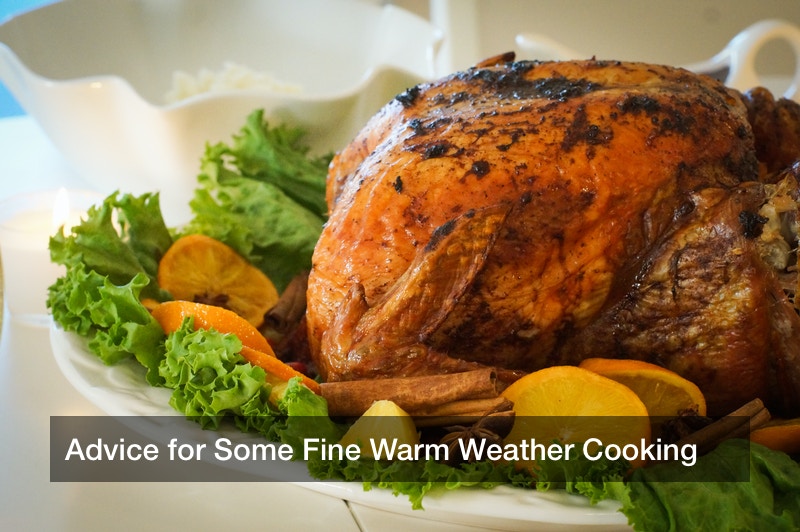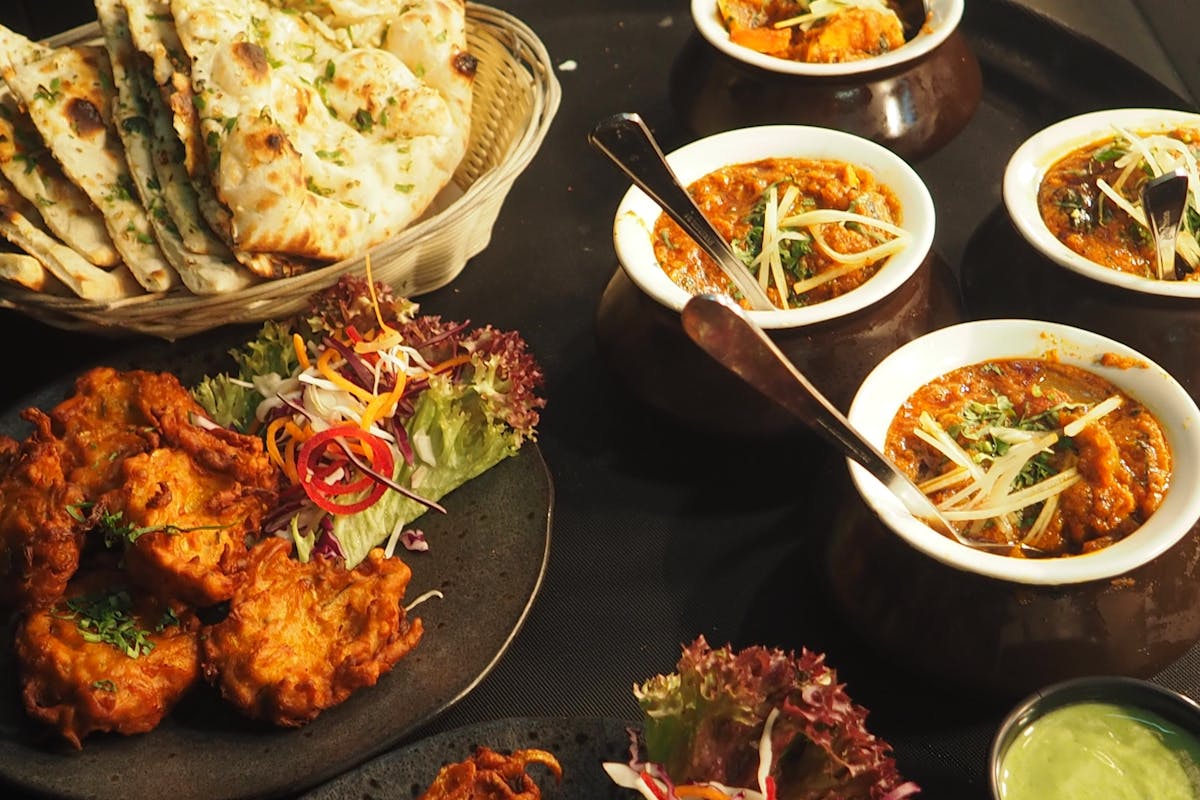
Who doesn’t love some good food and cooking during the spring and summer? A family doesn’t even have to wait until the Fourth of July to get out the grill and serve a fine meal on the back porch during warm weather. Warm-weather cooking tips are many and varied, some for safety, others for flavor and ingredient ideas. Cooking is a major responsibility since the cook is preparing food that other people are putting into their bodies. It would be a real shame for the cook to accidentally give someone food poisoning, upset their stomach, or set off a food allergy. Fortunately, many cooking tips are out there today, and they can make any meal healthy, safe, and sanitary for everyone. Some cooking tips are helpful for a picnic in a park, and others explain how to cook for kids with allergies or even prepare food for pets. What should a homeowner do to give their family and friends a fine meal, and what if their pet accidentally eats something they shouldn’t?
Safety Comes First
Let us start with the “safety first” side of modern cooking tips. Naturally, no one wants to serve unsafe food and give someone food poisoning; going to the emergency room is not part of a typical dinner party plan. Still, accidents can happen, and many of them are quite preventable with a little care. To begin with, the chef must make sure that all the meat they prepare is properly cooked, based on the animal of origin. It is true that some people like rare steaks, but it is best to order such meat at a restaurant, where professional and licensed chefs can handle it. At home on the grill, cooking tips call for the thorough cooking of steaks, ribs, pork chops, and any other meat. A food thermometer is the right call, and it can give quick and accurate readings when the metal needle is poked into a piece of meat. Poultry, such as chicken and turkey, should be at least 165 degrees Fahrenheit, and beef and pork should be at least 155 degrees. Fish and eggs should be 145 degrees or hotter. Once the meat is safely cooked, then it is time for the fun stuff, such as BBQ seasonings and sauce.
What other safety-first cooking tips should a home chef bear in mind? Many of them involve the prevention of fires and grease spills. If a grease fire does break out, the burning pan should not be moved, nor should water be poured on the fire. Instead, the lid should be put on, to choke the fire and cut off its oxygen supply. When cooking with oils and grease, it is vital to monitor the cooking materials at all times, and use screens and lids to prevent hot droplets of grease from flying everywhere. Sleeves should be tight or short (not loose), and flammable objects such as paper towels should be kept away from burners and other hot items.
Other safety tips require that the cook keep pot handles oriented so that a person will not snag on them while walking around, and all appliance electrical cords should be in good shape. Damaged or frayed cords should be repaired or replaced at once, and a faulty or iffy electrical outlet should not be used, either. To prevent scalding (exposure to hot air), cooking tips demand that the chef open a lid facing away from them, so very hot air can be emitted from the other side. Children should be kept away from these hot pots and pans, so they don’t accidentally hurt themselves. And of course, a fully functional fire extinguisher should be nearby and easy to access.
What about pets? Most dogs and cats only eat regular pet food, though some homeowners are known to give their pets (typically dogs) scraps from the table. But giving a dog the wrong food may result in a trip to the animal hospital. Dogs should not be given certain foods, and food should be monitored in case a dog tries to eat it. For example, avocados are bad for dogs, and too much avocado can cause vomiting and diarrhea in dogs, and the seeds can obstruct their intestines. Alcohol is highly harmful to dogs, even in small amounts, and dogs should also be kept away from onions, garlic, caffeine, grapes, most dairy products, macadamia nuts, raw eggs, and more. All of these are also harmful to cats, along with green tomatoes and mushrooms.
Prepare Options for Kids
What kind of diet should a child have? This is a bit tricky, since a child is still growing and needs a lot of nutrients, and some children have allergies or food intolerance that the parents have not yet discovered. That, and kids are often picky about what they eat, even if the food is good for them. Babies, toddlers, and children need robust and balanced diets, and it is up to the parents to provide that diet. This may range from sandwiches (on average, Americans eat 53 pounds of bread pre-year) to hamburgers to macaroni and cheese and baby carrots, among others.
If a child is old enough and careful enough, cooking with mom or dad can rank among the many things to do with kids. A child can offer ideas or suggestions for lunch or dinner and take part in the cooking process. This can be great fun for kids, and teach them basic cooking skills and the value of hard work. A child can help bake a cake, and have fun mixing the batter and pouring it into the pan. Responsible children may pour ingredients into a blender and press the button, and of course, making Jell-O is safe and easy. Of course, a young chef should always be monitored, and in most cases, they shouldn’t handle knives or open flames. Meanwhile, many preschool programs involve snacks and lunch, and kids can learn about all kinds of foods that way.
Once again, safety is something to take very seriously here. Many children have food allergies or intolerance, and the parents must factor that into their cooking. A child might be lactose intolerant, and peanut and tree nut allergies are quite common among American youths. Should this be the case, the parents must take great care to check the labels of all the food they buy, and review the ingredients and nutrition facts. A child with allergies has to avoid certain foods, but that could mean missing the nutrients of that food. So, the parents can consult a nutritionist and their child’s pediatrician to learn about what sort of ingredients and meals are suitable for the child (and provide a balanced diet). Fortunately, the American food industry is more friendly to special eating restrictions than ever before, to the point where a child with a food allergy hardly has to miss a thing. If a child eats well and brushes their teeth, they can grow up with strong and clean teeth, and might not even need braces or similar dental care at all. Kids should not be allowed to chew on hard items, though, such as the bones in chicken wings or on ice cubes. This can damage the enamel.
Pack Food on the Go
often, Americans have their meals at the dining room table or in a restaurant, but many also like to eat or drink while they are out and about, or go on picnics. This can be great fun, but it also calls for the right gear and sanitation. Being away from the home’s clean kitchen and dining room means bringing along moisturized hand towels, liquid hand sanitizer, picnic blankets, plastic coolers, and more when eating outdoors. Since the family is not at home where they can wash hands at the sink, it is important to bring along the aforementioned hand sanitizer goods to keep hands clean before eating.
Performance drinkware vessels are a decent place to start. These are not ordinary coffee mugs or wine glasses; instead, performance drinkware can be made of metal, rubber, and tough plastic to keep a drink contained while a person is on the go. Such as if they are jogging, playing sports, or riding a bicycle, or if they just want a spill-free container while inside a vehicle. Thermoses are a fine start, which use vacuum technology to create strong insulation. Many are rated to keep the liquids inside hot for hours at a time, and cold drinks might stay cold for as long as 24 hours in some cases. Such thermoses are often pretty tough, and they come with sealed gaskets so that nothing will spill of the container is dropped or tilted while closed. These containers may also feature non-slip grips.
So, how about a picnic? This is the classic scene for warm-weather cooking, and a picnic can be done anywhere from the household’s large and pleasant backyard to a local park. This means cooking and preparing all the food ahead of time, from sandwiches and hamburgers to pasta salad and cake, not to mention the beverages. Wine bottles and similar containers can be brought along in a wine tote bag, which may be made of tough nylon and insulation to keep the wine cool. As for the food, warmer items can be brought along in a plain wicker basket (another classic image), and plastic coolers. Ice cream or other cold-sensitive food are better off in those insulated coolers, so they don’t melt before everyone is ready to eat.
A picnic requires some wildlife control, though, such as ant control. Ant invasions are typical of picnics, so some measures can be taken. Ants do not like cinnamon, so a person can buy a bulk container of it and thoroughly sprinkle the picnic site with it and deter these pests. If the picnic involves a table, cinnamon can be powdered onto its legs for ant control so they don’t climb up the wood and head for the food. As a bonus, cinnamon can be sprinkled onto the table’s bare wooden top, and then the picnic tablecloth can be draped over it. As for mosquitoes, lighting up citronella candles is a fine deterrent, and garlic can be used to deter insects as well. Drinking vessels should be covered whenever a person is not drinking from them, so insects don’t get into the liquid.
Remember Special Diets
Picnic or not, cooking tips may involve preparing special meals for certain food restrictions. Not only might a child have an allergy, but many adults do too, and some adults are known to develop certain food allergies after a certain age. This might even happen with lactose intolerance. A person with such allergies can take supplements to fill in any gaps with their diet, and consult their doctor for advice on supplements.
Meanwhile, many Americans are vegetarian or vegan either for health reasons or lifestyle reasons, and a home chef is urged to check ahead of time to see if any lunch or dinner guests have diet issues. Lactose intolerance, for example, or a vegetarian or vegan lifestyle should be confirmed beforehand so the chef can prepare. A chef can prepare side dishes for guests with these special needs or interests, and they can even acquire extra ingredients to make certain vegetarian, vegan, or lactose-free meals for those guests. Looking online is a great way to find alternatives to the main course’s meals, to omit anything from cheese and milk to beef or even eggs or gelatin (vegans do not eat gelatin since it is made from animal bones). By now, awareness of vegetarian and vegan lifestyles is high, and this is fortunate for many Americans. Quite a few specialized cookbooks are out there, both in print and online, for a dazzling variety of special-diet dishes, from breakfast to dinner and dessert, and even snacks. If dinner guests also have religious dietary restrictions, then those can be accommodated too, and the chef can ask those guests for cooking ideas. Just to name one example, a Muslim dinner guest can describe halal recipes to the host.
Cooking is a lot of fun, and all cultures in the world love good food and creative ways to use local ingredients. In fact, many domestic and international tourists greatly look forward to trying the local cuisine. Whether someone is eating out in Paris or preparing a backyard picnic, warm weather cooking means safety, sanitation, and proper ingredients to be factored in for a good meal. So long as the kitchen is hazard-free and pests are kept away, a cook can create any meal at their leisure, and fine drinks besides. Summer and spring are a wonderful time to get some sun, fresh air, and a belly of good food for anyone.








